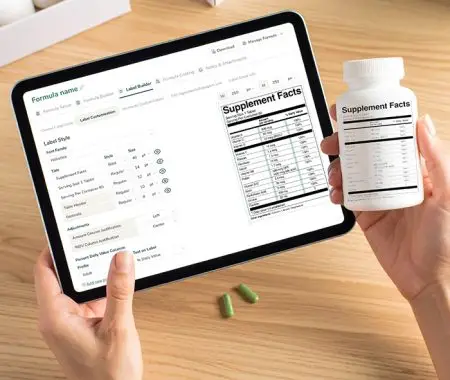In the competitive food and beverage industry, nutrition facts labels are put in place to educate and make consumers aware of what is contained in the products they consume. Their purpose is to also ensure that food products comply with the regulatory standards of certain geographies and follow a broader commitment to healthier and more informed food choices for the general public.
Food Label Maker has created an extensive Resource Hub that aims to inform individuals about the new regulations and to make the extensive CFIA more digestible pieces. Each article in the Hub breaks down a specific regulation and illuminates key compliance requirements set out by the CFIA and Health Canada. The articles not only explain complicated terminology and provide step-by-step guides to food labeling, but they also cover many regulatory bases so that businesses avoid legal penalties that might arise if these rules are not followed.
Whether it’s deciphering the latest Front-of-Package (FOP) nutrition symbol mandate or understanding sweetener labeling nuances, the Regulatory Hub equips producers with the knowledge they need to thrive in this regulated environment.
Another reason why Food Label Maker created the Regulatory Hub was to foster transparency and trust in the food industry. Consumers today are becoming more health conscious and want to know exactly what is contained in food products and products in general. Therefore, clear and accurate labeling is not only paramount for businesses to be in good favor with regulatory bodies but consumers also appreciate knowing what they are putting into their bodies.
In light of this, the Canadian Food Inspection Agency (CFIA) has introduced new regulatory changes that would require manufacturers and businesses in the industry to comply with, if they still need to do so. The most notable changes are:
- Relevant food products need to have the front-of-package (FOP) nutrition symbol. Introduced in July 2022, this symbol should be added to foods that contain high labels of saturated fat, sodium, and sugars to make consumers aware that these nutrients are present. It aims to curb any health risks or diseases related to a high intake of such nutrients and help consumers make informed food choices overall.
- Nutrient Content and Health Claims are statements on food labels that indicate whether a product is for example, “low fat” or may “reduce the risk of heart disease”. These claims need to be checked and regularly updated to match what scientists know about nutrition and what consumers expect. Food companies need to follow these rules so that they do not make false claims about their products.
- Nutrition labels that point out how much fat, sugar, and other nutrients are in food are changed to make them easier for people to understand. The CFIA updates the format and requirements of these labels every so often to make sure they’re clear and accurate. They might change things like how big the serving sizes are, how the % Daily Values are shown, or what other information needs to be included, like allergens.
- Some consumers have allergies to certain foods, like peanuts or milk. To keep this group of people safe, food labels have to clearly state if a product contains common allergens. The rules about how to do this have been made stronger recently to ensure people with allergies can easily spot if a product is safe to eat.
- Ingredient Lists need to be written in a certain way. The heaviest ingredient needs to be listed first, and then the others are listed in order from heaviest to least heaviest.
See How FoodLabelMaker Can Help You
In light of these challenges, Food Label Maker has created a Regulatory Hub on its website. It aims to provide direction, clarity, education, insight, and empowerment to individuals, producers, and manufacturers alike who are navigating their way through this maze of CFIA regulations.
By educating readers on CFIA regulations and unpacking the components of a nutrition facts label, the Hub inadvertently teaches consumers how to read a food label when walking through the store or reading the back of a milk bottle. This empowers consumers to make more informed decisions when it comes to their food choices and avoid potential long-term health risks.
By having all the more important and necessary information in one consolidated place, Food Label Maker helps companies keep up with ever-changing regulatory changes and be ready for whatever new rules come their way. Whether it’s new trends in labeling or updates to health claims, the Regulatory Hub keeps every business in the loop.
In conclusion, Food Label Maker’s Regulatory Hub is more than just a collection of rules and regulations. It is a testament to education and knowledge when it comes to food labeling and tries to shape a healthier, more transparent food industry. Through its detailed coverage of CFIA regulations, the Hub tries to create a culture of compliance, accountability, and empowerment for consumers and businesses. From emerging labeling trends to evolving nutritional standards, this Regulatory Hub keeps producers informed and prepared for whatever the regulatory landscape may hold in the future.



